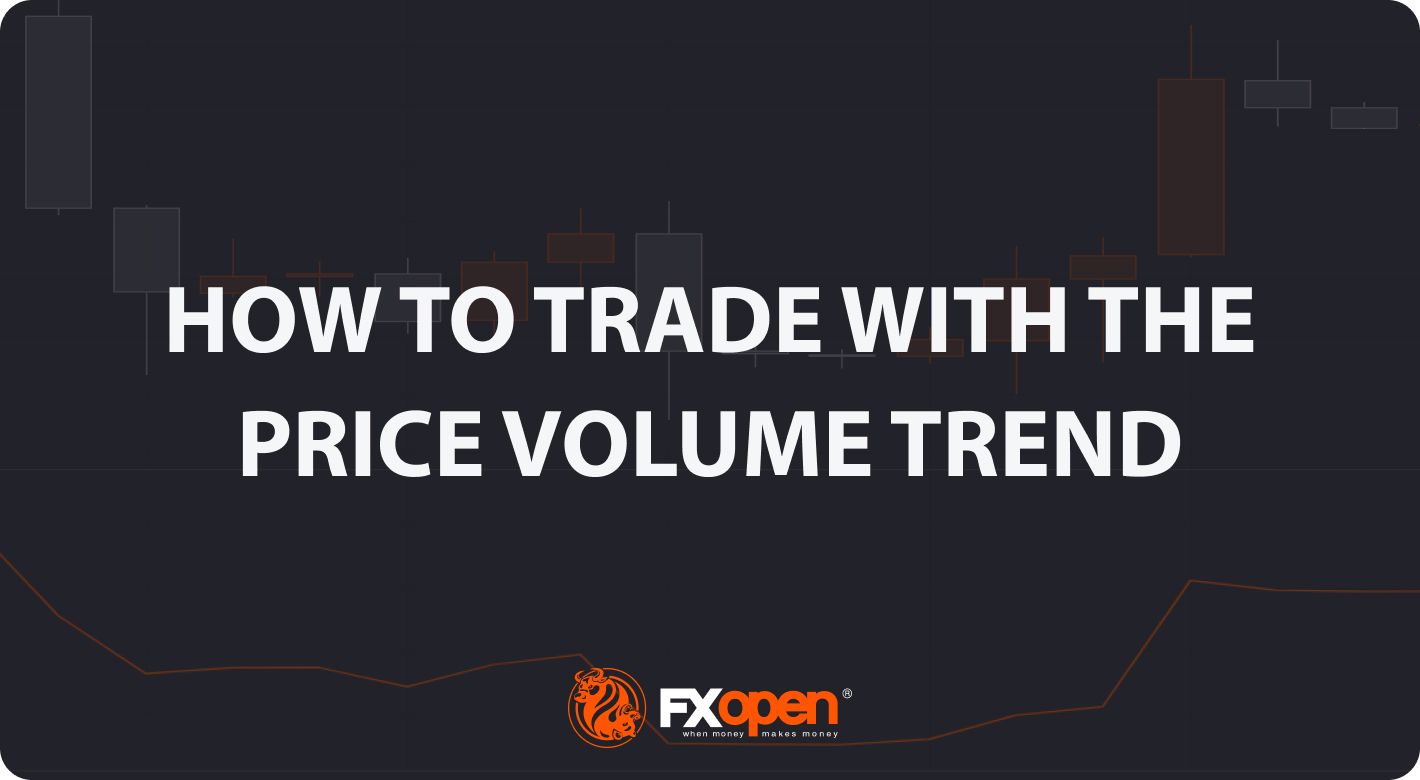Price Volume Trend: Using the Indicator for Trading Strategies

Evaluating volume and price movements is one of the key pillars of technical analysis. One tool used in this process is the Price Volume Trend indicator. In this FXOpen article, we will delve into this indicator, discussing its calculation, uses, and limitations.
What Is the Price Volume Trend Indicator?
The Price Volume Trend (PVT) in technical analysis is a momentum-based tool designed to measure cumulative volume and price movement. Its core function is to establish a relationship between the number of trades and value changes, helping traders gain insight into the strength of a trend.
Essentially, the PVT indicator helps traders understand if a movement is being supported by volume. In trading terms, "volume" is the number of asset units traded in a market during a given period. Its calculations result in a single line that fluctuates above and below a zero level, signifying the strength and direction of a trend. This line reflects whether the volume is expanding or contracting when prices are rising or falling.
Price Volume Trend Formula and Calculation
The Price Volume Trend is calculated by incorporating value changes and trading volume. The formula is as such:
PVT = [(Current Closing Price - Previous Closing Price) / Previous Closing Price] * Volume + Previous PVT
It begins with calculating the percentage change in price. This ratio is then multiplied by the trading volume, reflecting both price change and quantities traded. The resulting value is added to the previous period’s PVT, forming a cumulative value. Simply put, positive values denote bullish sentiment, while negative values suggest bearish sentiment.
Given the lack of clear boundaries in the tool, interpreting the Price Volume Trend isn’t a science but rather an art where interpretation is highly dependent on context. Feel free to practise your PVT skills in FXOpen’s free TickTrader platform.
How to Interpret the Price Volume Trend in Technical Analysis
The PVT can be a potent tool for confirming trends and spotting potential reversals. It's especially useful for identifying price-volume volatility and trend divergences that may signal significant market changes.
A rising line implies bullish sentiment, showing increased volume as prices rise. This trend might signify an upward movement gaining strength. In contrast, a falling PVT line indicates bearish sentiment as the shares or contracts traded increase while values drop, suggesting a potential future downtrend.
Divergences between the line and trends can also offer valuable clues. Bullish divergence arises when an asset creates new lows, but the PVT line doesn't, possibly indicating an impending upward reversal. Conversely, bearish divergence occurs when the price makes new highs, but the PVT makes a lower high, hinting at a downtrend.
Moreover, it can be used alongside other technical analysis tools, like moving averages or the relative strength index (RSI), for stronger trend confirmation. For instance, concurrent bearish divergence in the PVT and RSI may add weight to an expected reversal. Meanwhile, if a moving average shows a bullish movement and the PVT aligns, it could suggest a good entry point.
Limitations of the Price Volume Trend Indicator
While the indicator offers significant insights, it is not devoid of limitations. Notably, it can generate false signals. The PVT, like other momentum oscillators, may generate false signals. There might be instances where the line indicates a bullish or bearish divergence, but the expected reversal doesn't materialise. This discrepancy is particularly common in sideways or range-bound markets where volume and values may fluctuate without significant directional bias.
Secondly, during periods of high volatility, such as economic news releases, it may react dramatically to large movements coupled with sharp increases in the number of shares or contracts traded. However, these swings may not necessarily signify a sustainable trend, resulting in misleading signals. Therefore, its utility may be reduced in highly volatile market conditions.
The Bottom Line
In summary, the PVT, despite its limitations, remains a valuable tool in a trader's arsenal, helping to confirm trends and spot potential reversals. When trading the price and volume trend, study how this indicator reacts – you may find it can be a greater help than you initially thought. If you’re ready to put your PVT skills to the test, you can open an FXOpen account and gain access to over 600+ markets and the advanced TickTrader platform. Good luck!
Read more: https://fxopen.com/blog/en/understanding-the-price-volume-trend-fxopen/
Text source: Forex Trading Blog










